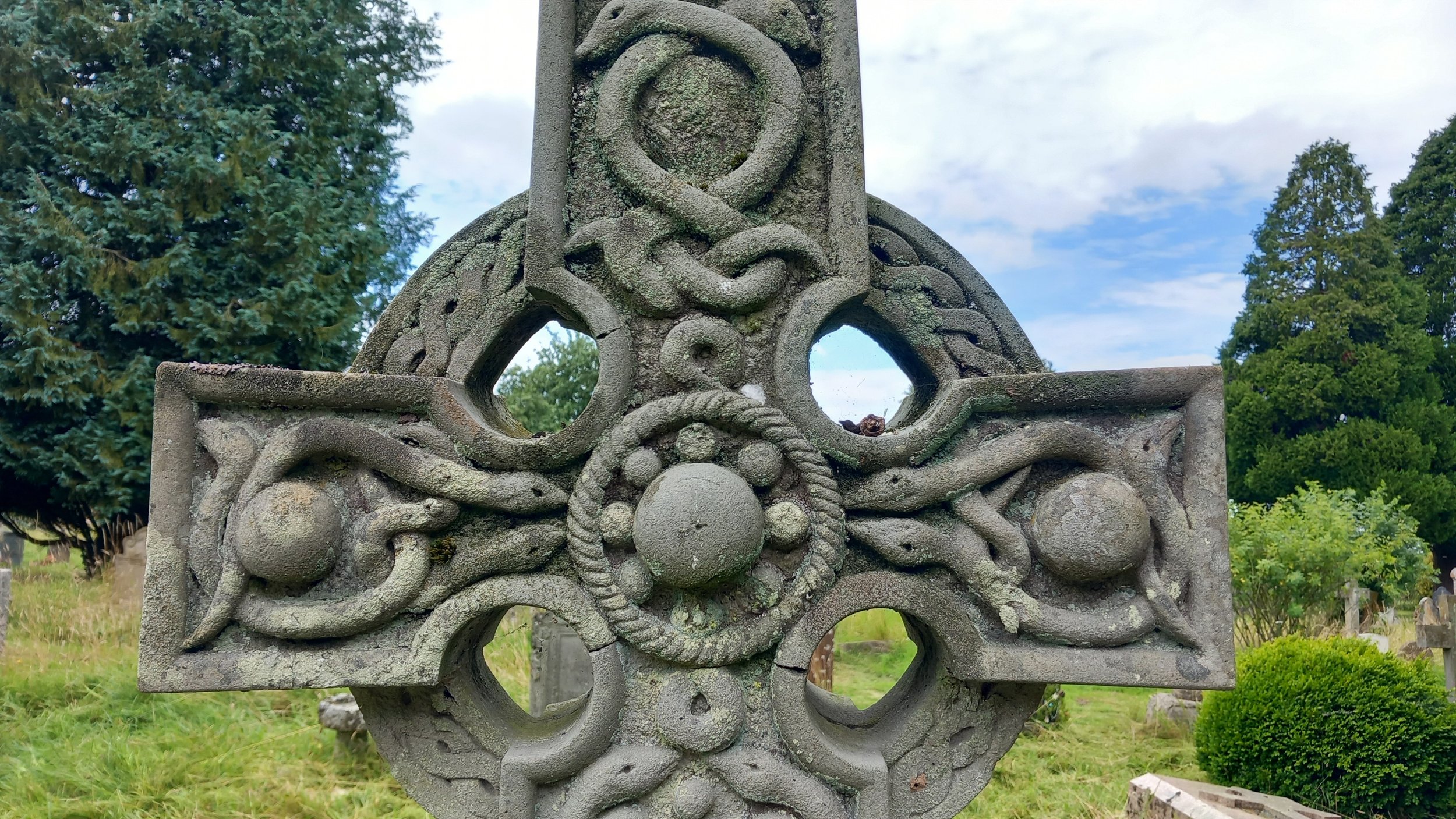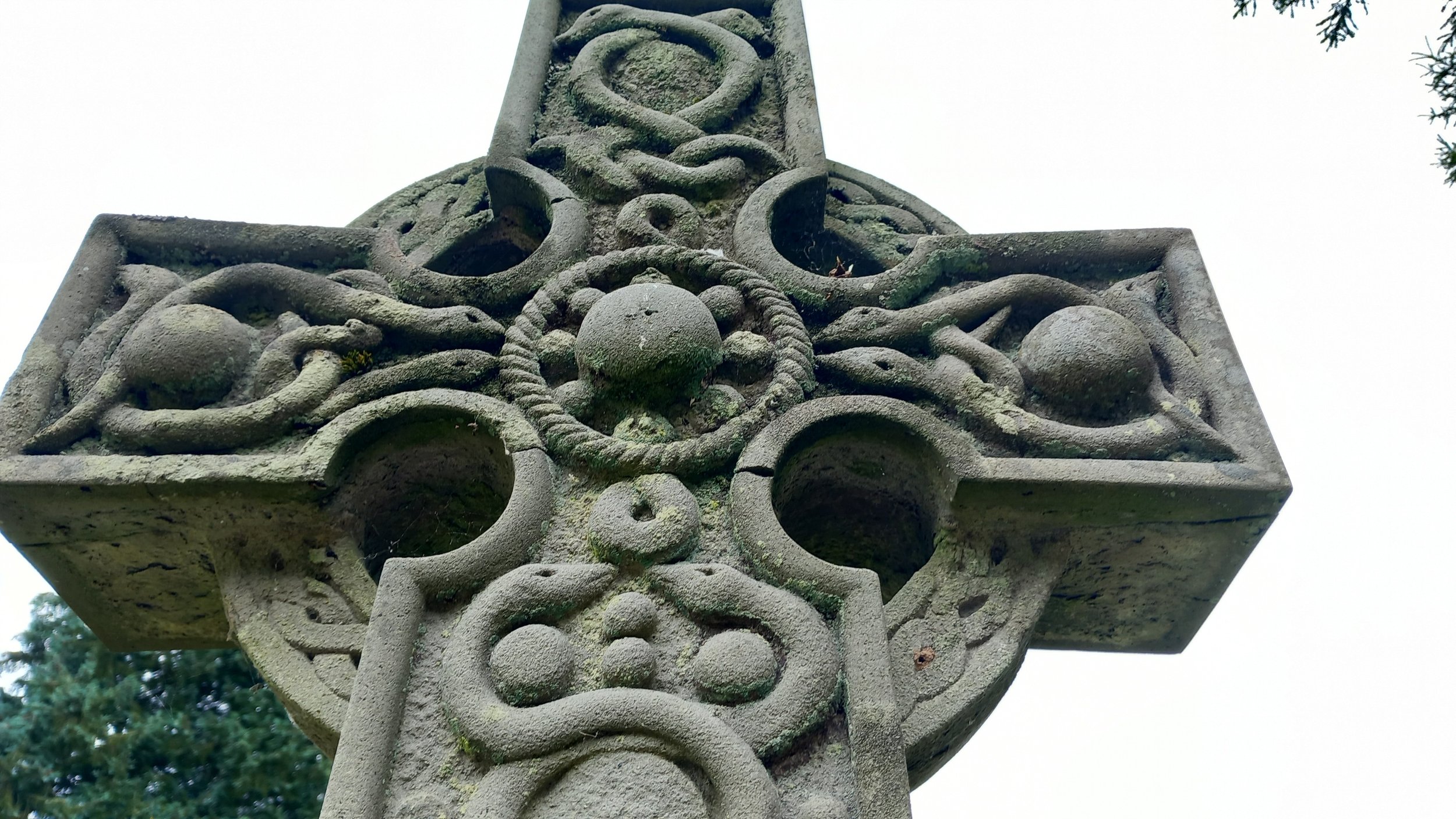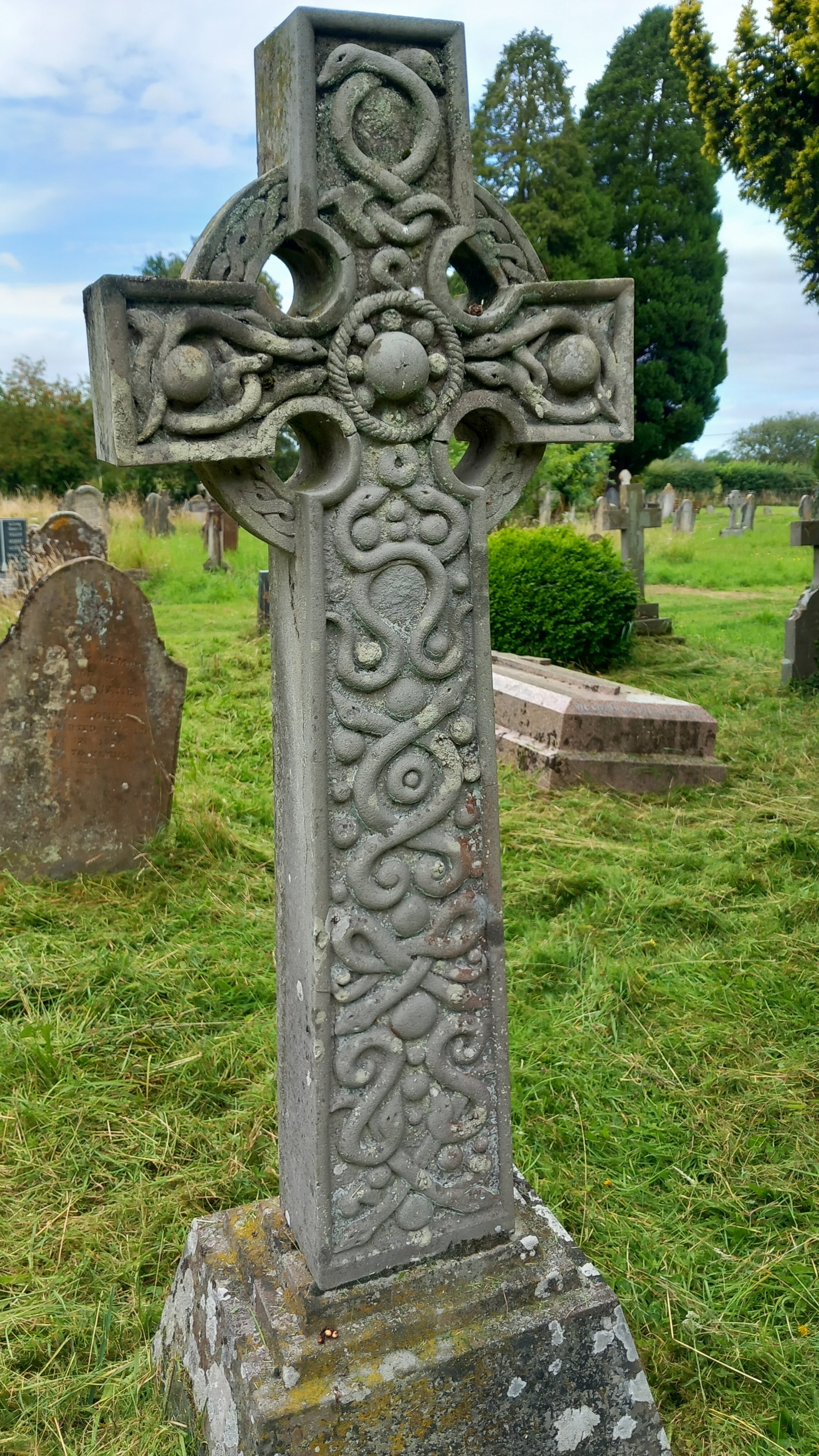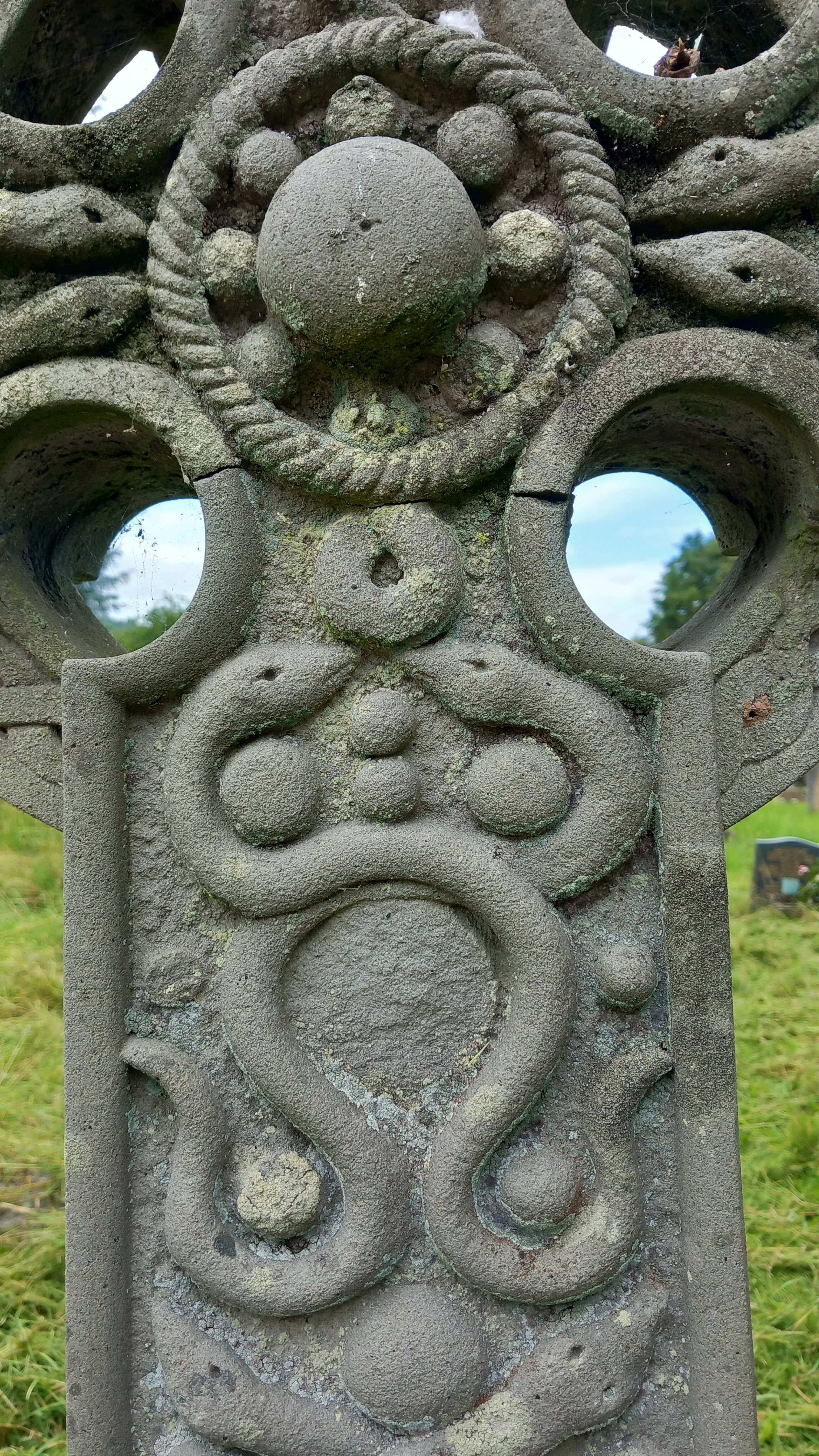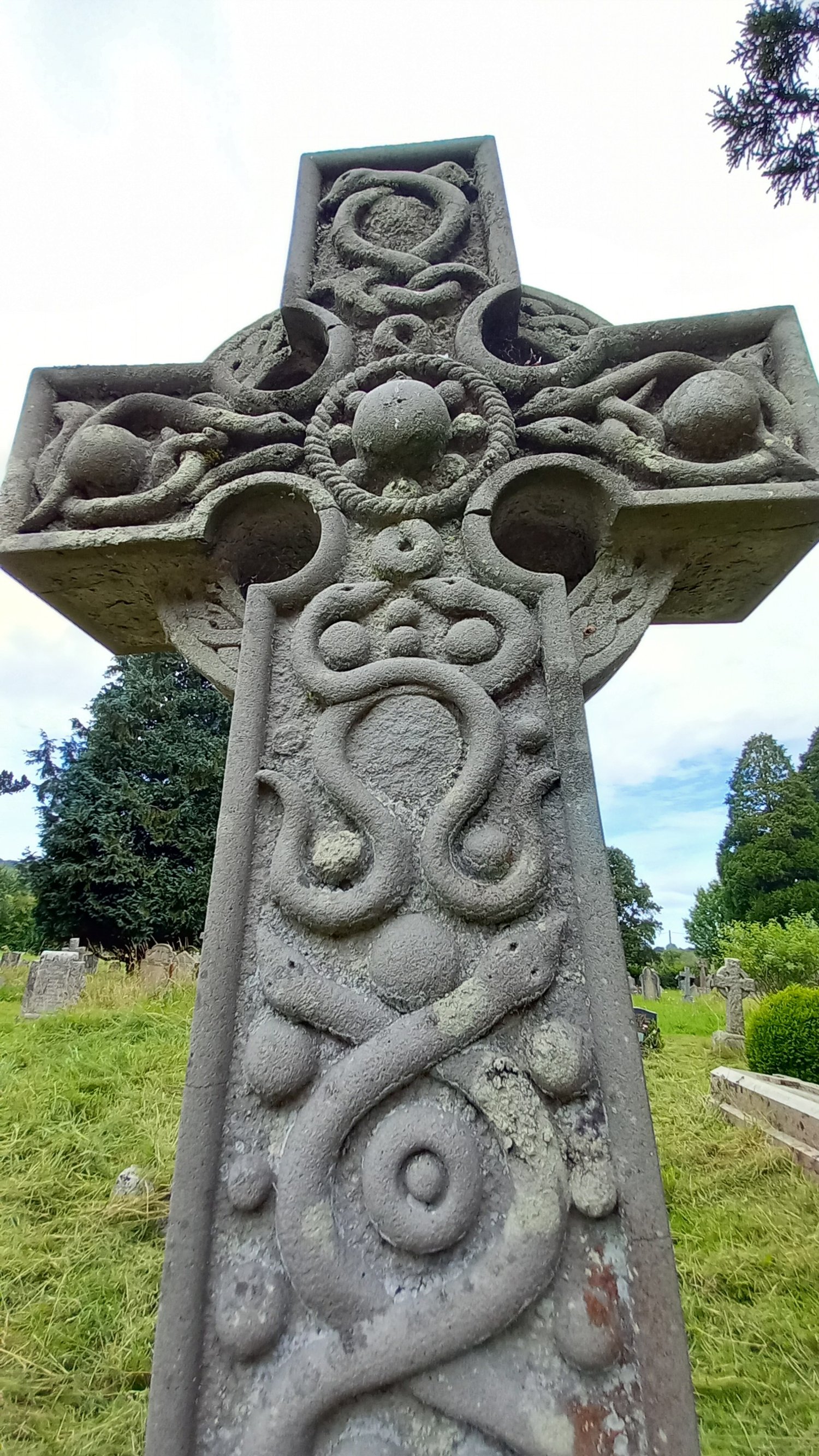Graves Ancient and Modern: the Celtic Cross
While many of Colwall St James’ oldest graves are no longer marked by headstones, a stroll through the churchyard still reveals how the fashions of the times influenced its development over the centuries. Here we take a look at the Celtic cross marking Edith Binyon’s grave, a stunning example of the Celtic Revival style.
Edith married Thomas Wakefield Binyon, a relative of the poet Lawrence Binyon of For the Fallen fame (“They shall not grow old …”). They lived at Hoe Court in Colwall and Edith died in 1928.
Her memorial is a tall Celtic cross intricately carved with serpents. The cross is framed by a nimbus, or halo. In pre-Christian times this circle of light referred to the sun, worshipped by Celts. The nimbus became a symbolic link between the old pagan ways and Christianity.
The 19th century saw growing interest in Ancient British and Celtic history. Known as the Celtic Revival, its influence spread across literature, art and design, including memorials.
These complex designs required expert stonemasons and were expensive to produce. A typical Victorian Celtic cross might contain complicated pattens of knots and whorls inspired by ancient examples, often with added biblical symbols. Other Celtic crosses in the churchyard adhere to this formula. But Binyon’s cross features a complex pattern of 19 intertwined, knotted serpents. The snake is associated with evil and temptation in the Bible – their bad reputation started in the Garden of Eden - so it’s not an obvious symbol to put on a gravestone!
However, looking at serpents’ use in ancient monuments, the symbolism makes more sense. The Romans painted them on their tombs in the same way that Christians now use the cross. Snakes shed their skin, seen as a symbol of rebirth. The Anglo-Saxons saw serpents as guardians of their treasure and burial sites, drawing them as wyrms - mythical beasts such as sinewy dragons. Early Anglo-Saxon Christians incorporated them into their jewellery and monument designs.
Edith’s cross shows how the interests of Victorian historians and antiquarians prompted a new fashion that took inspiration from across the ages. That’s a lot of history in just one memorial, and it is perhaps appropriate that it stands in the shadow of the ancient British Camp.
